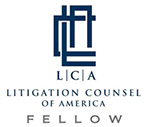By Matthew T. Kavanagh and Jason M. Massaro
The Indiana General Assembly passed the Indiana Business Flexibility Act (IBFA) in 1993, providing for the creation of limited liability companies (LLC). There are important distinctions between LLCs and corporations that should be analyzed when deciding between the two forms. These distinctions include legislative policy considerations, business formalities, tax implications, litigation, creditor rights and others. This article examines these distinctions.
Note that specific tax implications are beyond the scope of this article but may significantly affect which entity is preferable. Furthermore, the Business Entity Harmonization Bill was passed by the Indiana General Assembly and became effective Jan. 1, 2018. It created a new article 0.5 in title 23, I.C. 23-0.5-1-1 et seq, of the IBFA and is known as the Business Uniform Organizations Code (BUOC).
Case Law
As recently as 2013, the Indiana Court of Appeals acknowledged that, although the IBFA has been around for over 20 years, “there is (still) little case law interpreting [it].” Pazmino v. McKinney, 989 N.E.2d 784, 789 (Ind. Ct. App. 2013). But corporations and corporate statutes have been around since our country’s founding, so there is extensive case law interpreting corporate laws, including the Indiana Business Corporation Law (IBCL). This long history lends a degree of confidence when attorneys and shareholders anticipate the way courts will rule in corporate disputes. As LLCs become a more prevalent and preferred business entity, it will be important to follow how courts interpret and apply the IBFA.
Policy Consideration
One of the purposes of the IBFA is to increase flexibility and freedom in business formation and structure. This is evident from the IBFA’s name and I.C. 23-18-4-13, which provides, “[t]he policy of [the IBFA] is to give the maximum effect to the principle of freedom of contract and to the enforceability of operating agreements of limited liability companies.” Conversely, there is no language or evident policy consideration in the IBCL that provides such a strong indication of internal business independence.
Business Formation and Maintaining Records Generally
The IBFA also was intended to make the Indiana business climate more attractive to potential businesses. One example of this is found in I.C. 23-18-2-4 and I.C. 23-18-2-7, which allow for the creation and operation of an LLC simply by filing articles of organization with the Indiana secretary of state. Nothing else is required — not even an operating agreement. Another example is that a person need not be a member of an LLC before or after the time of formation. Id. The Indiana Court of Appeals has recognized that once the articles of incorporation are filed and the filing fee is paid, a legal entity exists that can sue and be sued. Blacklidge v. Blacklidge, 96 N.E.3d 108, 114 (Ind. Ct. App. 2018). Nor is an LLC required to have an officer, create a board of directors or establish who will be performing the duties of the board. Moreover, the records that an LLC must maintain at its principal office are minimal and generally include a list with the full name and last known mailing address of each member and manager (if any) of the LLC; a copy of the articles or organization; the three most recent years of the LLC’s federal, state, and local income tax returns (if any); copies of any written operating agreement or any written operating agreement no longer in effect; and general financial information regarding the amount of cash (if any) and a statement of the agreed value of the other property or services contributed by each member. I.C. 23-18-4-8.
The requirements for forming a corporation are much more burdensome under the IBCL. One example is found in I.C. 23-1-21-5(a) and -6(a), which require incorporators or the board of directors to adopt initial bylaws for the corporation. Another example is found in I.C. 23-1-33-1, which requires a board of directors for a corporation with more than 50 shareholders. If there are fewer than 50 shareholders, then a corporation may dispense with the board of directors, but it must describe in its articles of incorporation who will perform the duties of the board of directors. Furthermore, I.C. 23-1-33-1 requires a corporation to have at least one officer. In addition, the records that a corporation must keep are far more extensive than those required to be kept by an LLC and include, inter alia, minutes of all meetings of its shareholders and board of directors; a record of all actions taken by the shareholders or board of directors without a meeting; appropriate accounting records; a record of all shareholders containing specific information in a particular format; and a copy of its articles of incorporation, bylaws, resolutions, minutes, all written communication to shareholders generally within the past three years, a list of all its current directors and officers, and its most recent annual report. The IBCL requires that all such records be maintained in a written format or in another form capable of conversion into a written form within a reasonable time.
Tax Liability
Tax liability is an important factor in determining which business structure to select. Any income by a C-corporation will be taxed twice, once at the corporate level and again either as income to an employee or to a shareholder when a dividend is distributed. Rent-A-Center East, Inc. v. Ind. Dep’t of State Revenue, 42 N.E.3d 1043, 1047 (Ind. Tax Ct. 2015). Although LLCs can be taxed like a C-corporation, one of the most enticing aspects of an LLC is its classification as a pass-through entity for tax purposes, which allows it to be taxed as an S Corporation (while not having the same restrictions), a partnership (if more than one member), or a disregarded entity (if only one member). Pazmino, 989 N.E.2d at 787.
Filing Suit — Direct Vs. Derivative Claims
“A direct action is ‘[a] lawsuit to enforce a shareholder’s right against a corporation.’” G&N Aircraft, Inc. v. Boehm, 743 N.E.2d 227, 234 (Ind. 2001). Direct actions are typically taken to enforce the right to vote, to compel dividends, to prevent oppression or fraud against minority shareholders, to inspect corporate books, or to compel shareholder meetings. G&N Aircraft, 743 N.E.2d at 234 (citing Principles of Corporate Governance sec. 7.01, at 17 (A.L.I. 1994)). Direct claims brought by either a shareholder or a member have very few restrictions as to either a corporation or an LLC.
Derivative claims “are suits ‘asserted by a shareholder on the corporation’s behalf against a third party … because of the corporation’s failure to take some action against the third party.’” G&N Aircraft, 743 N.E.2d at 234. The purpose of a derivative suit is “to redress an injury sustained by, or enforce a duty owed to, a corporation.” Id.
To bring a derivative action on behalf of a corporation, a litigant must comply with both Indiana Trial Rule 23.1 and I.C. 23-1-32-1, which require that the plaintiff was a shareholder of the corporation when the transaction complained of occurred. Moreover, the shareholder must fairly and adequately represent the interest of the other shareholders of the corporation and must allege with particularity the demand made, if any, to obtain action by the board of directors and either that the demand was refused or ignored or why the shareholder did not make the demand. The complaint must also be verified.
The general rule is that a shareholder must bring a derivative rather than direct action when seeking redress for injury to the corporation. Barth v. Barth, 659 N.E.2d 559, 561 (Ind. 1995). However, the appellate court in Barth recognized two reasons to deviate from this rule in cases of closely held corporations. First, shareholders in a close corporation stand in a fiduciary relationship to each other. Second, shareholder litigation in the closely held corporation context will often not implicate the policies that mandate requiring derivative litigation when more widely held corporations are involved. Id. at 562. Those policies being that the direct claim will not “(i) unfairly expose the corporation or the defendants to a multiplicity of actions, (ii) materially prejudice the interests of creditors of the corporation, or (iii) interfere with a fair distribution of the recovery among all interested persons.” Id.
Conversely, under the IBFA, there are no such requirements for a member or manager to bring a suit on behalf of the LLC. The only requirement found in the IBFA is an affirmative vote of a majority in the interest of the members. I.C. 23-18-8-1.
The more important distinction is the limited effect that derivative suits have on LLCs. To flesh this out, an important difference between bylaws and operating agreements must be analyzed. An operating agreement under the IBFA is “any written or oral agreement of the members as to the affairs of a limited liability company and the conduct of its business that is binding upon all members.” I.C. 23-18-1-16. As parties to that contract, the members can enforce it against other members who breach the agreement. On the other hand, shareholders cannot enforce bylaws in the same way since bylaws establish the relationship between the corporation and its shareholders. In one aspect, that is why derivative lawsuits are so important when one shareholder has a grievance against another shareholder, director, or officer. The shareholder has to enforce the corporation’s rights because the obligations created through bylaws do not inure directly to the benefit of the shareholders. As such, a shareholder generally has to bring a derivative lawsuit in the name of the corporation.
Fiduciary Duties — Shareholder vs. Member
In Purcell v. S. Hills Inves., LLC, the Indiana Court of Appeals held that common law fiduciary duties, similar to the ones imposed on partnerships and closely held corporations, are applicable to Indiana LLCs. 847 N.E.2d 991, 996 (Ind. Ct. App. 2006) (citing Credentials Plus, LLC v. Calderone, 230 F. Supp. (2d 890, 900 (N.D. Ind. 2002)). Subsequent cases have followed the holding and reasoning in Purell regarding the fiduciary duties of LLC members. See Fiderlein v. Boutselis, 952 N.E.2d 847, 860 (Ind. App. 2011); Blacklidge, 96 N.E.3d at 115. Notably, shareholders in a closely held corporation owe absolute fiduciary duties to both the corporation and other shareholders, whereas members, pursuant to a written operating agreement may modify, increase, decrease, limit or eliminate a member’s fiduciary duties. I.C. 23-18-4-4. This is a significant difference.
Personal Liability
To determine whether a member is personally liable for the LLC’s actions, courts use an analysis similar to determining whether there is personal liability of a corporation’s shareholder or officer. Troutwine Estates Dev. Co., LLC v. Comsub Design & Eng’g, Inc., 854 N.E.2d 890, 899 (Ind. Ct. App. 2006). The court in Troutwine acknowledged that “[b]ecause the [IBFA] provides protections to [LLCs] like those of corporations, to circumvent those protections we apply an analysis similar to that for determining the personal liability of a corporation’s officers.” Troutwine, 845 N.E.2d at 899 (citing Brant v. Krilich, 835 N.E.2d 582, 590 (Ind. Ct. App. 2005)).
A shareholder may be found personally liable if the corporate entity has been disregarded or is simply an “alter ego.” In order to pierce the corporate veil and reach a shareholder’s assets plaintiffs must meet their burden of proof by presenting evidence showing:
(1) undercapitalization; (2) absence of corporate records; (3) fraudulent representation by corporation shareholders or directors; (4) use of the corporation to promote fraud, injustice or illegal activities; (5) payment by the corporation of individual obligations; (6) commingling of assets and affairs; (7) failure to observe required corporate formalities; or (8) other shareholder acts or conduct ignoring, controlling, or manipulating the corporate form. Aronson v. Price, 644 N.E.2d 864, 867 (Ind. 1994).
Charging Orders
A critical difference between a corporation and an LLC is the rights of a creditor of a shareholder of a corporation or of a member of an LLC. Under the concept of “outsider-reverse veil piercing” (ORVP), a creditor of a member may collect only against a member’s “interest” in the LLC. I.C. 23-18-1-10. A creditor’s rights against a member, in both single and multi-member LLCs, are significantly limited. One of the most important differences between an LLC and a corporation is the limitation of a “charging order.”
Although the IBFA does not expressly provide that a charging order is the exclusive remedy for member’s creditors, Indiana courts have done so, stating: “essentially a charging order is the only remedy for a judgment creditor against a member’s interest in an LLC.” Crider v. Crider, 15 N.E.3d 1042, 1070 (2014) (citing Brant v. Krilich, 835 N.E.2d 582 (Ind. Ct. App. 2005)). A judgment creditor awarded a charging order under section 23-18-6-7(b) “has only the rights of an assignee of the member’s interest in the limited liability company.” Id. For example, a member’s creditor cannot take over the management of the LLC.
Conversely, there is no statutory protection of a shareholder in a closely held corporation when a creditor or judgment holder obtains voting shares of the corporation. Crider v. Crider, 15 N.E.3d 1042, 1067-68 (Ind. App. 2014).
For a more detailed analysis of ORVP, refer to He’s No Creditor of Mine: Charging Orders, Outsider-Reverse Piercing, and LLCs, Indiana Lawyer (Aug. 14, 2013).
Summary
LLCs, for the most part, will continue to be the preferred business entity structure. That said, corporations do benefit from well-established case law. No one size fits all, and careful counsel will assess each client’s individual situation to make a cogent recommendation.
Mr. Kavanagh is an associate in the Indianapolis firm of Schultz & Pogue and a member of the DTCI Business Litigation Section. Mr. Massaro heads the Massaro Legal Group in Indianapolis and is a member of the DTCI Board of Directors. Opinions expressed are those of the authors.














